Materials, material properties and material analytics
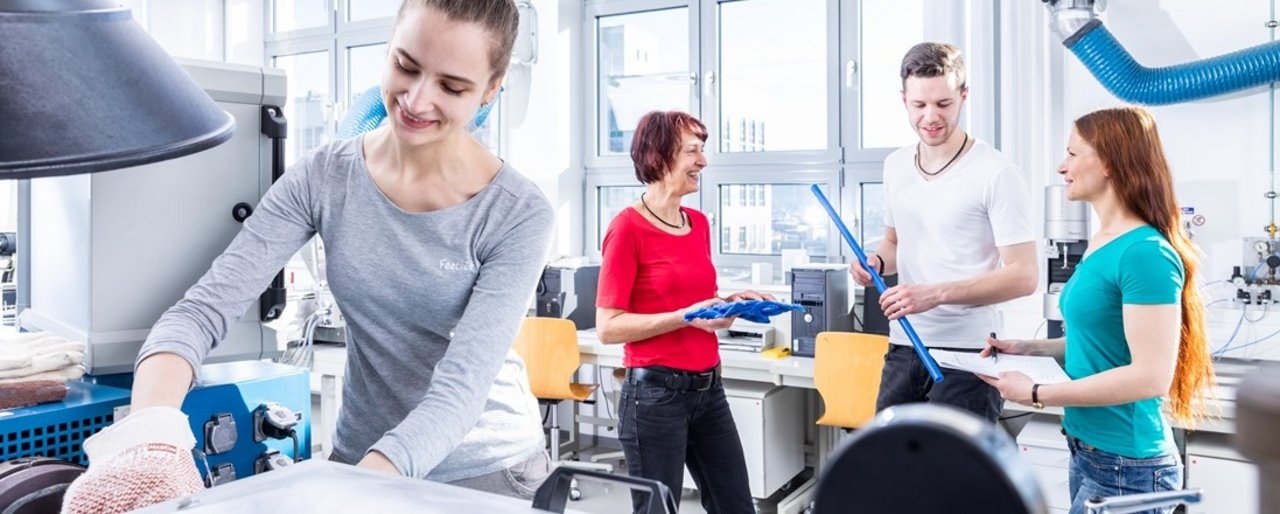
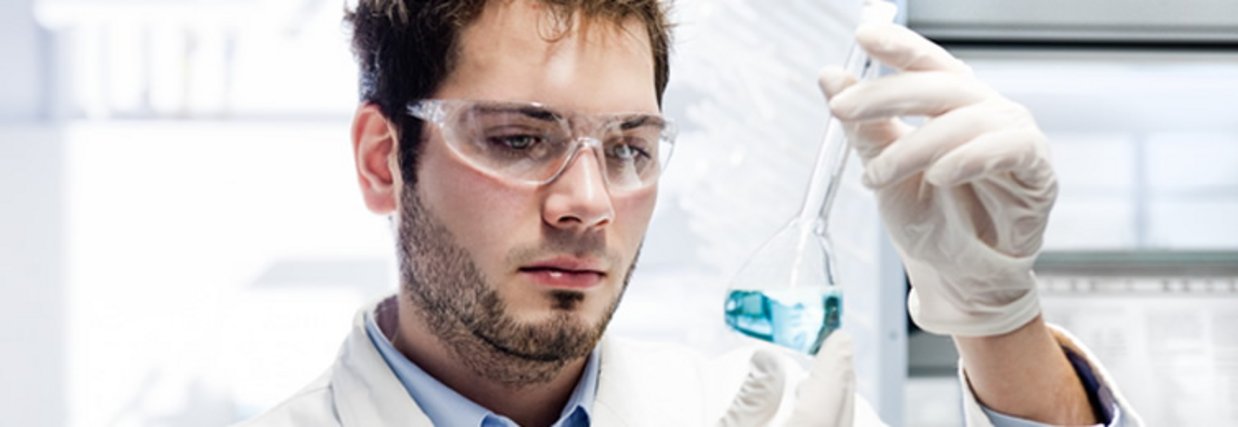
An extensively equipped chemistry laboratory is available for basic chemical training, mainly in the materials engineering and environmental engineering courses.
Contact
- Head: Prof. Dr. Jörg Töpfer
- Staff: Erik Hartmann
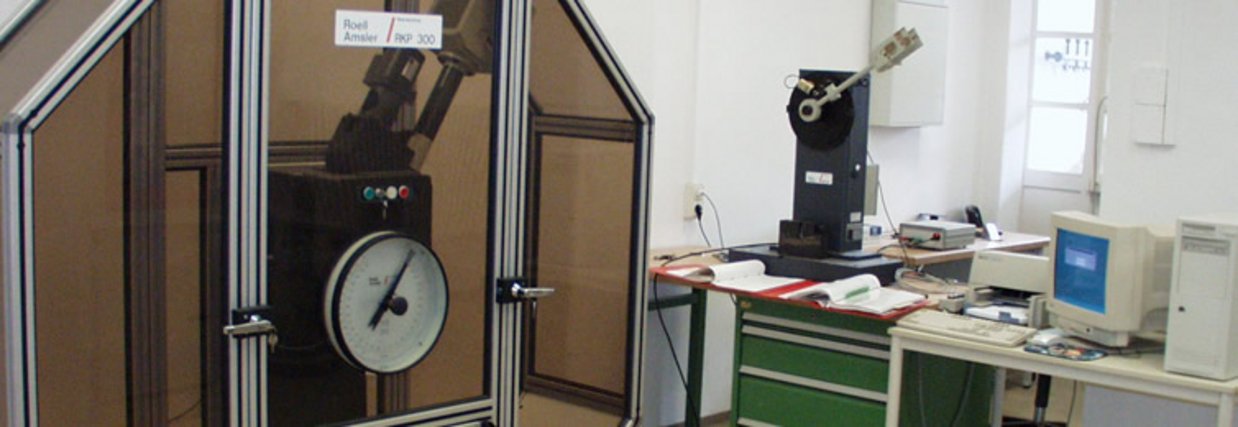
In this laboratory area, students are familiarized with methods of dynamic materials testing, e.g. the notched bar impact bending test and the Wöhler test.
Testing systems
For toughness tests, pendulum impact testers with different impact energy (50 joules and 300 joules) and different specimen arrangements (Charpy and Izod) are available. For fatigue strength tests, a resonance - bending - vibration device from Rumml is available. Ultrasonic flatbed scanner with ultrasonic testing system from Dr. Hillger for testing frequencies up to 30 MHz.
Contact
- Head: Prof. Dr. Jürgen Merker
- Staff: Olaf Hesse
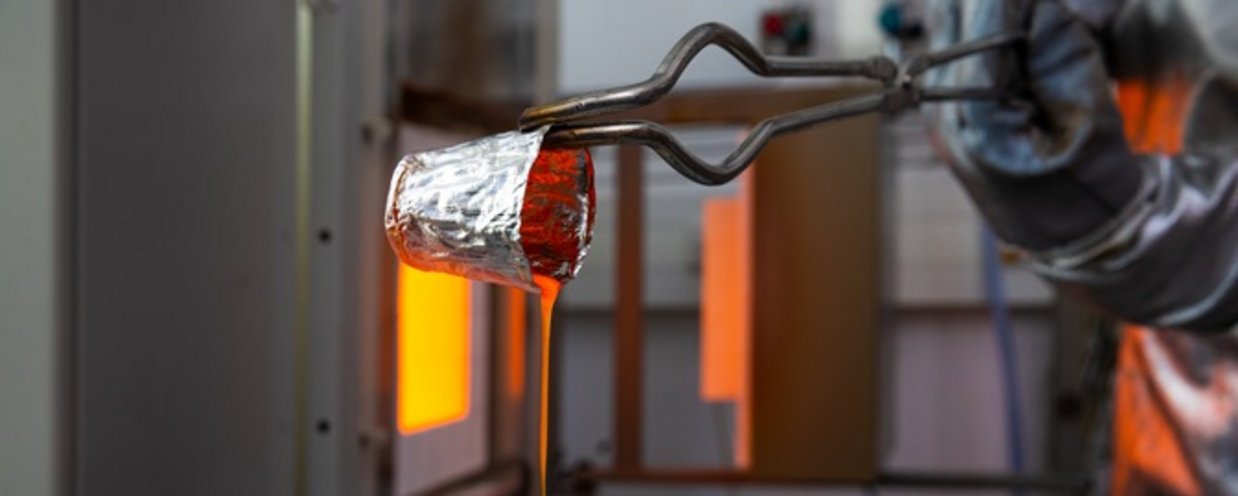
For training in the materials group glass and ceramics, methods for powder and batch production, mixing, homogenizing, sintering and melting are available in this laboratory.
Furnaces
- Various melting and sintering furnaces up to 1700°C
- Tube furnace with gas dosing and measuring equipment for working under defined atmosphere
- Vertical tube furnace
Contact
- Head: Prof. Dr. Jörg Töpfer
- Staff: Erik Hartmann
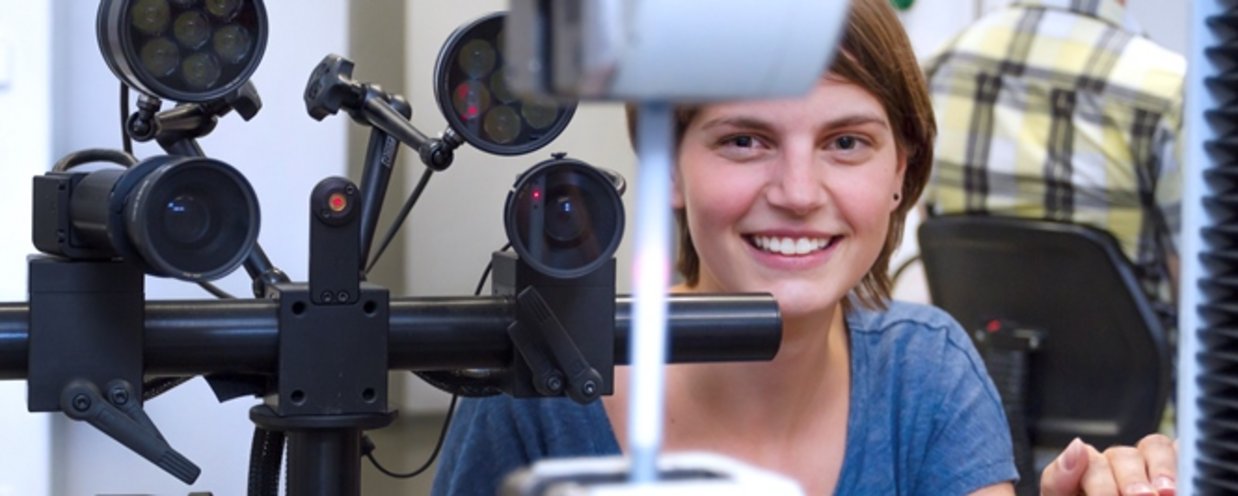
Using the equipment in this laboratory, the students will apply their experience of strength measurement at room temperature to the special conditions at extremely high temperatures. The close link between teaching and current research topics (platinum materials, refractory metals) is particularly evident here.
Test systems
The equipment available for measuring mechanical properties at extremely high temperatures (up to 3000°C) is internationally unique. The laboratory is equipped with four systems for creep tests and a sample chamber for hot tensile tests.
Contact
- Head: Prof. Dr. Jürgen Merker
- Staff: Erik Hartmann
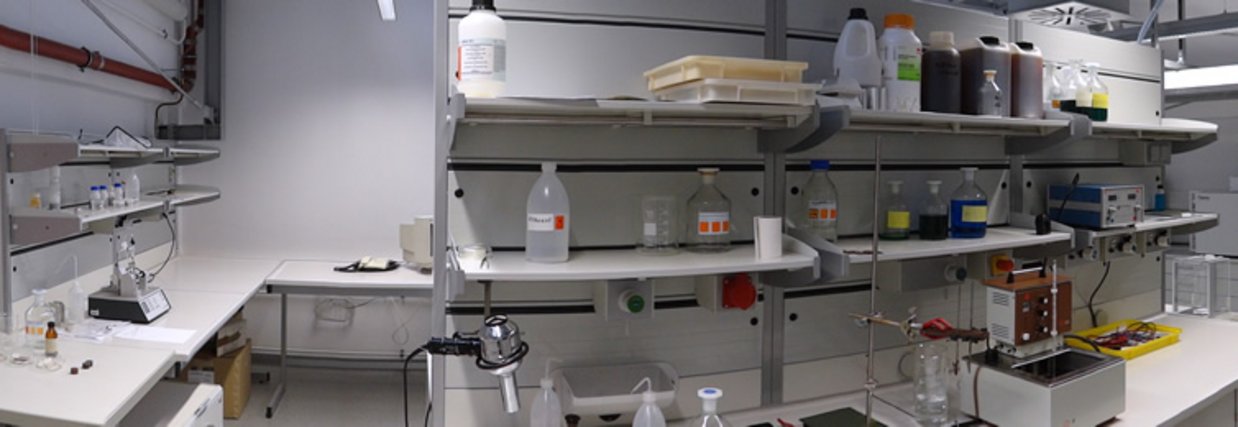
In this laboratory, experiments are carried out on corrosion as well as on the coating and modification of technical surfaces (e.g. nickel plating, copper plating, anodizing).
Workstations
Experiments on surface corrosion Experimental set-up for anodizing aluminum
Contact
Head: Prof. Dr. Maik Kunert
Staff: Erik Hartmann
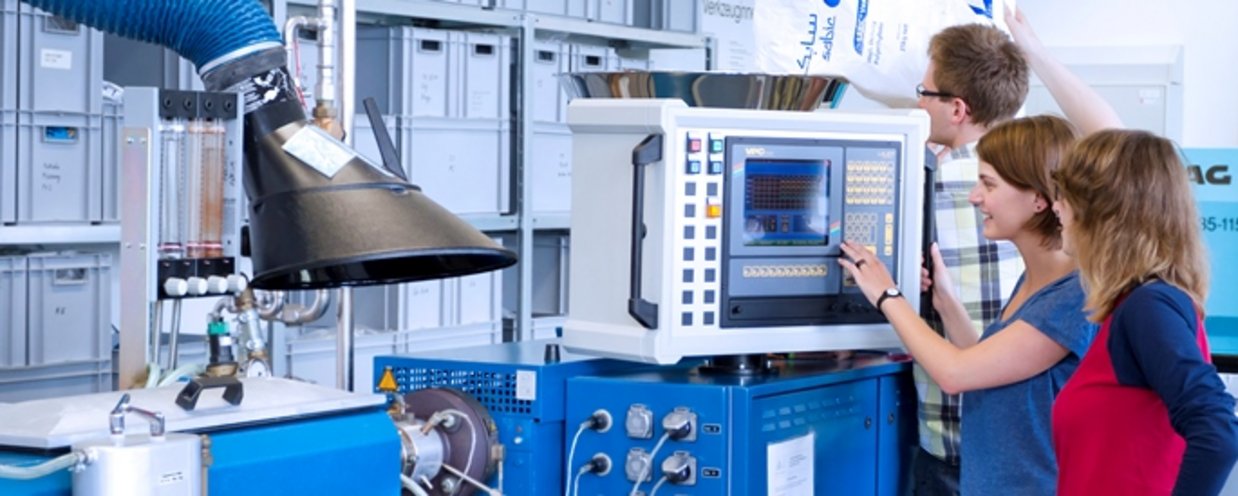
Knowledge of the processing conditions of plastics is a basic prerequisite for their targeted and effective use. In this laboratory, students are taught the rheological properties of plastics, as well as the main processing methods such as injection molding and extrusion.
Contact
Head: Prof. Dr. Christian Kipfelsberger
Staff: Ilona Goj
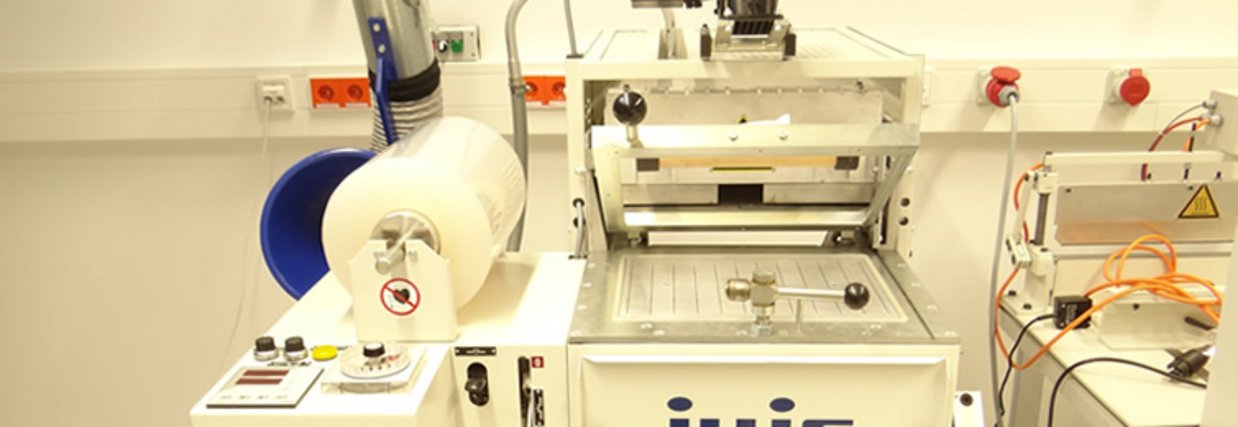
In this lab, students are taught thermoforming and how to make thin sections and view them under a microscope.
Contact
- Head: Prof. Dr. Christian Kipfelsberger
- Staff: Ilona Goj
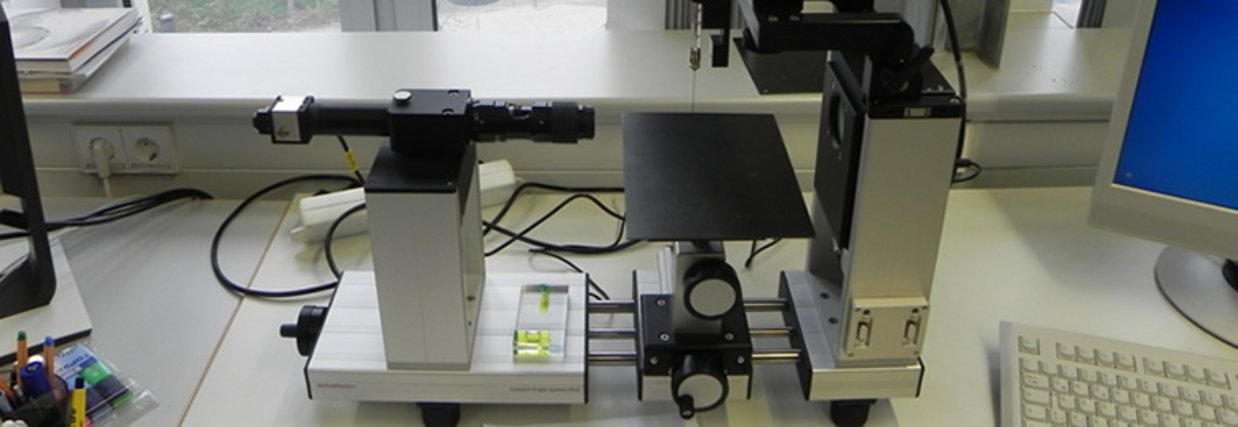
In the laboratory, it is possible to investigate the expansion behavior of materials in the high-temperature range (up to 2000°C). In addition, the laboratory has a contact angle measuring device which is used for the surface energetic characterization of coatings and component surfaces.
Contact
- Head: Prof. Dr. Jürgen Merker
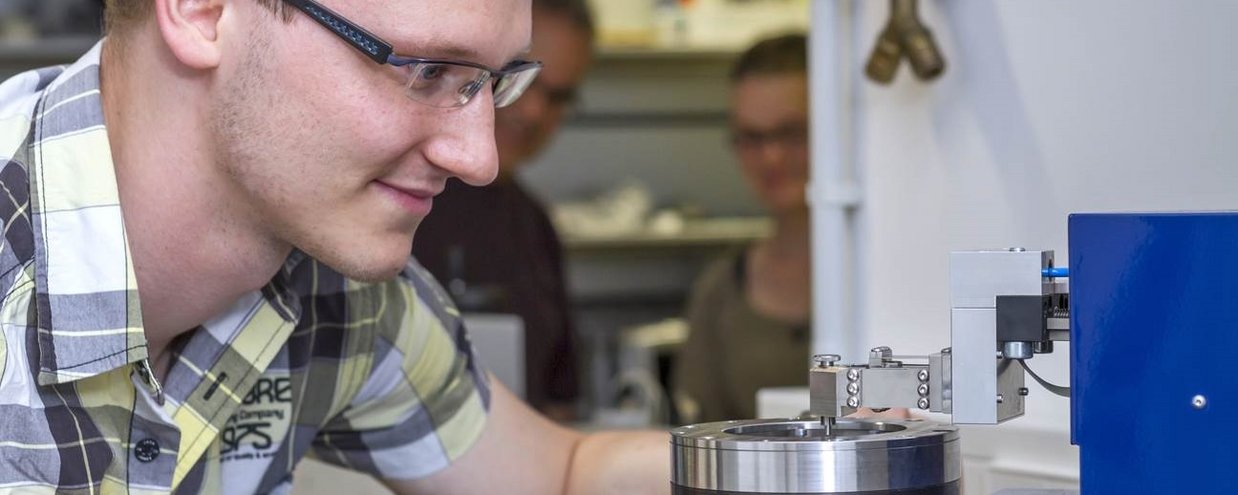
In this laboratory, experiments are carried out to characterize coatings or areas close to the surface. The students learn, among other things, the method of recording hardness measurement and the calotte grinding method.
Contact
- Head: Prof. Dr. Maik Kunert
- Staff: Erik Hartmann
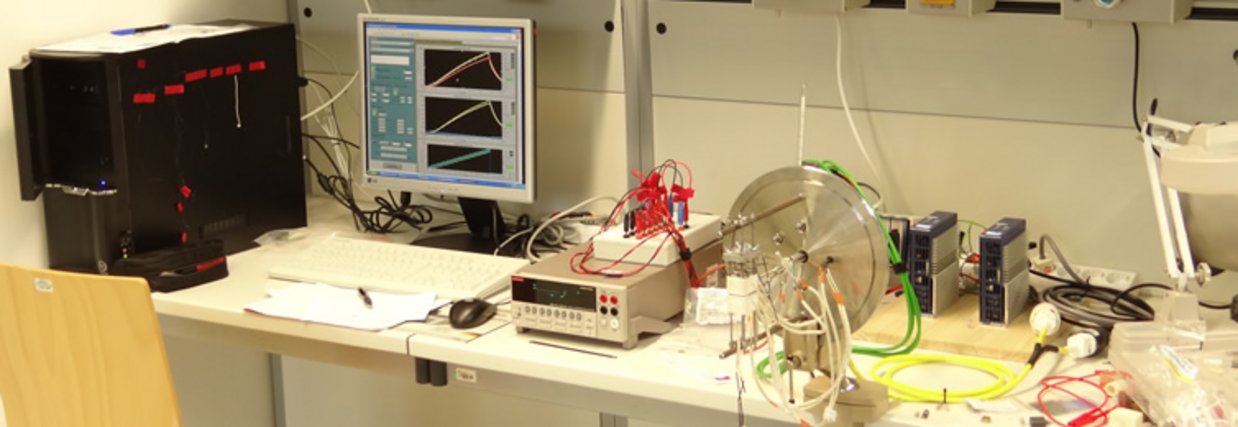
Various methods for physical materials diagnostics are available in the laboratory. One focus is the analysis of electrical and thermal transport properties. Thermal diffusivity, electrical conductivity and the Seebeck coefficient can be measured over a wide temperature range. In particular, students can gain experience in measuring temperature-dependent transport quantities in solids.
Workstations
- Measuring station for the determination of electrical conductivity and thermopower as a function of temperature (self-made)
- Measuring station for the determination of thermal diffusivity as a function of temperature (Linseis)
- FTIR spectrometer with accessories for different sample shapes (Mattson)
Contact
- Head: Prof. Dr. Steffen Teichert
- Staff: Dr. Annett Rechtenbach
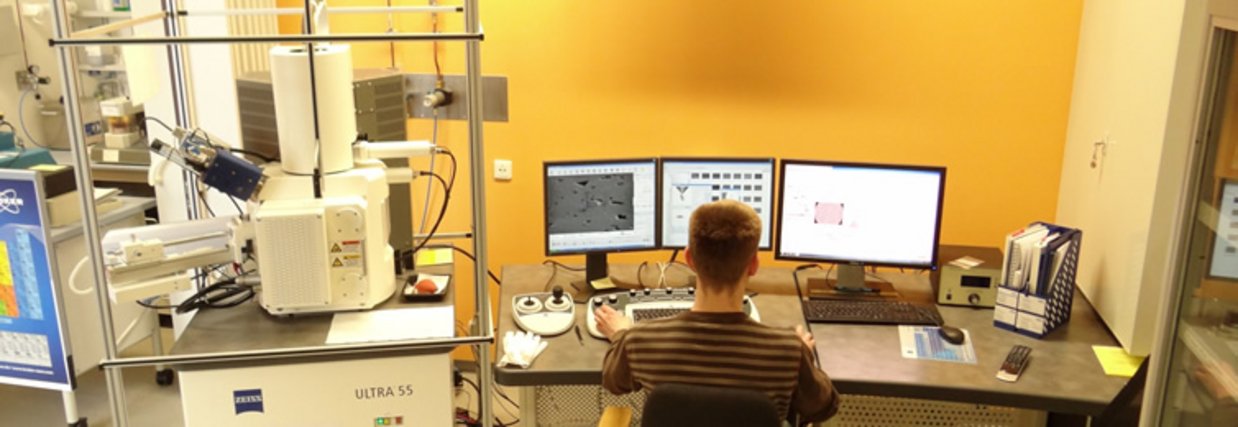
Today, scanning electron microscopy is one of the most important imaging techniques for visualizing the finest microstructures of spatially structured objects. Due to the high achievable depth of field over a large magnification range, it is particularly suitable for imaging uneven surfaces. Due to the simultaneous availability of different signals, microanalytical investigations can be performed in addition to structural and morphological surface characterizations.
Different detectors for secondary electrons and backscattered eectrons (standard detectors and Inlens detectors) are available for imaging. In addition, imaging in transmission geometry is possible (STEM detector). The characteristic X-rays excited by primary electrons in the sample are recorded by an energy dispersive detector (EDX), allowing qualitative and quantitative determination of the elemental composition with a high spatial resolution. Electron backscatter diffraction (EBSD) can be used to determine local crystallographic information such as crystal structure and crystal orientation.
In the practical courses on electron microscopy, students are taught the basics of SEM, EDX and EBSD. The breadth of applications of scanning electron microscopy is demonstrated using various materials as examples.
Contact
- Head: Prof. Dr. Lutz Wilde
- Staff: Dr. Annett Rechtenbach
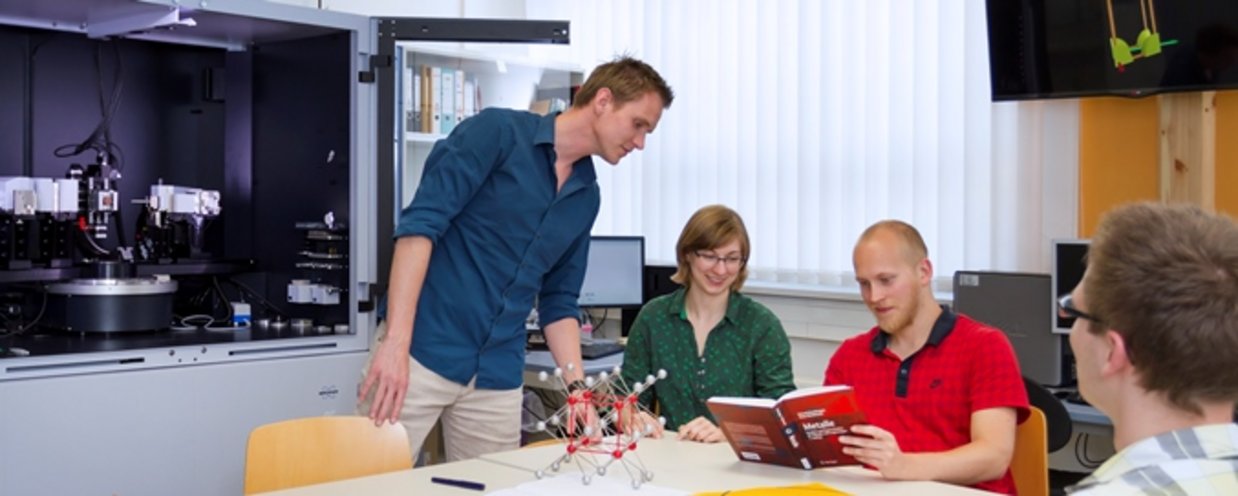
X-ray diffraction is used to characterize a range of structural properties of crystalline samples. The available equipment allows the qualitative and quantitative analysis of the phase inventory on powder samples as well as the analysis of textures and stresses on solid samples. For special requirements, the existing equipment can be adapted in a variety of ways. For example, measurements on thin films (GID, XRR) or analyses as a function of temperature are possible. In the practical courses, students are taught basic principles of X-ray diffraction and the application for qualitative and quantitative phase analysis.
Contact
- Head: Prof. Dr. Lutz Wilde
- Staff: Erik Hartmann, Dr. Annett Rechtenbach
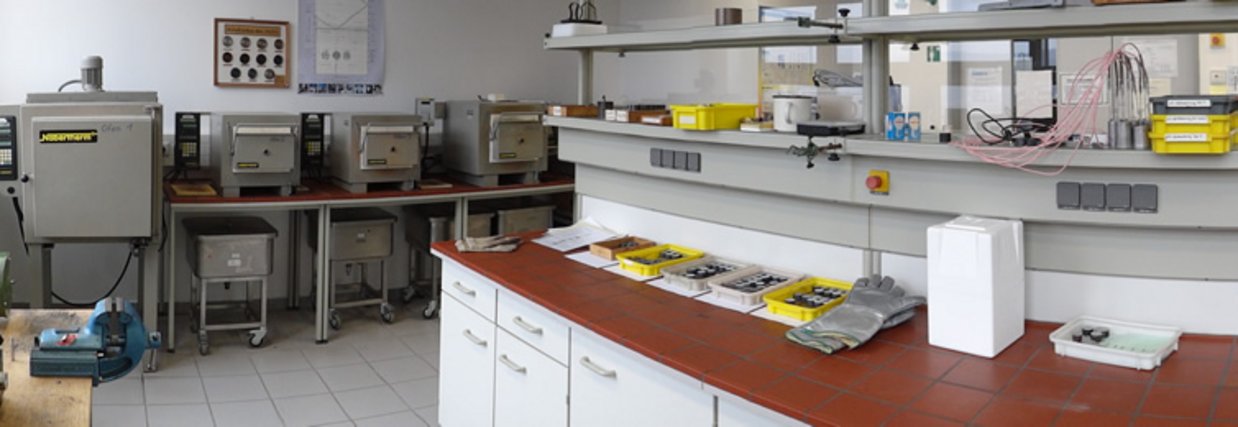
In this laboratory area, students conduct experiments on crystallization of melts, thermal analysis, recrystallization and heat treatment of steels and non-ferrous metals. In addition, skills in performing hardness measurements are taught.
Contact
- Head: Prof. Dr. Jürgen Merker
- Staff: Olaf Hesse
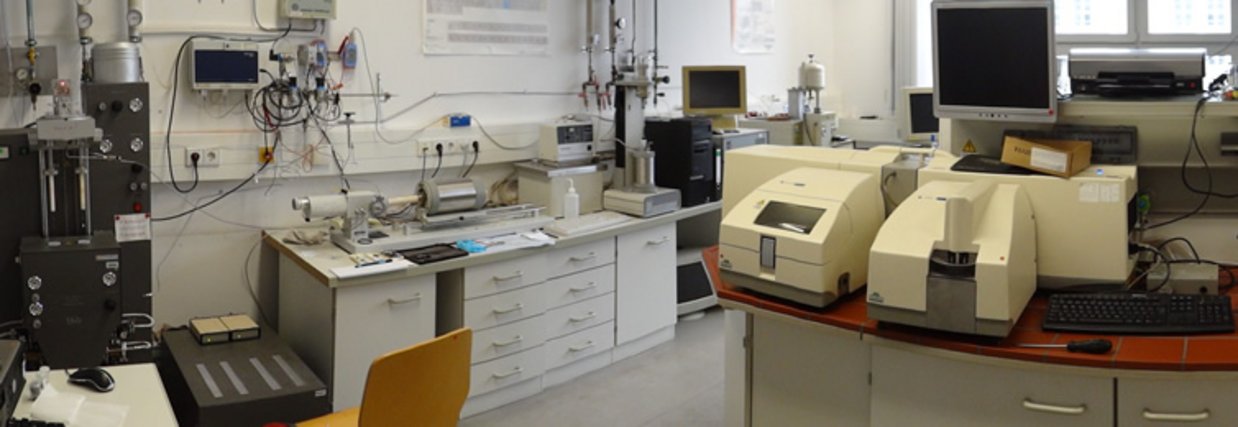
This laboratory houses equipment for the investigation of a wide range of material properties. Thermoanalytical investigation methods, powder size characterization methods and methods for characterizing magnetic properties are available here for the materials science investigation of a wide range of material groups.
Contact
- Head: Prof. Dr. Jörg Töpfer
- Staff: Erik Hartmann
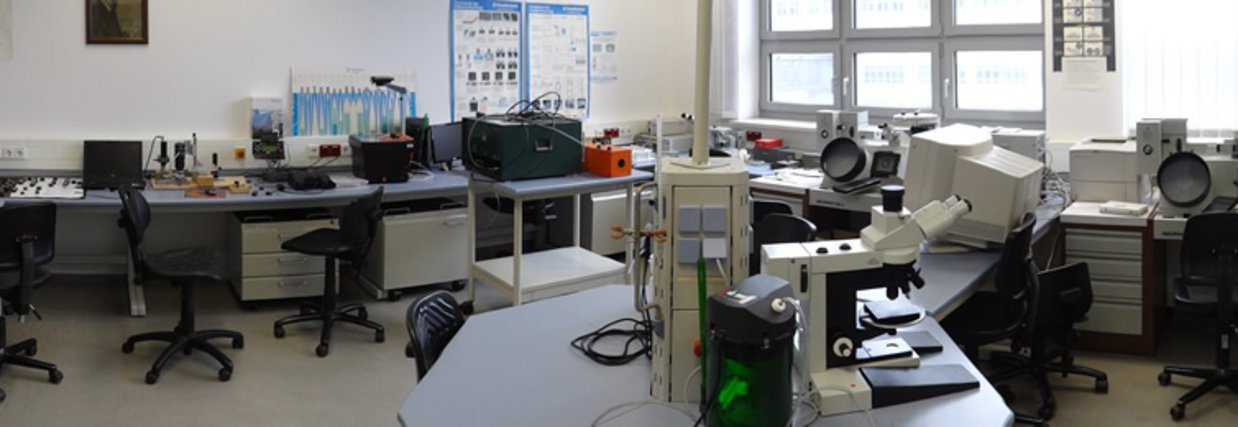
In this laboratory area, students are trained in basic skills in microscopy in conjunction with the interpretation of microstructures, microhardness measurement, and non-destructive materials testing using ultrasonic methods.
Contact
- Head: Prof. Dr. Jürgen Merker
- Staff: Olaf Hesse
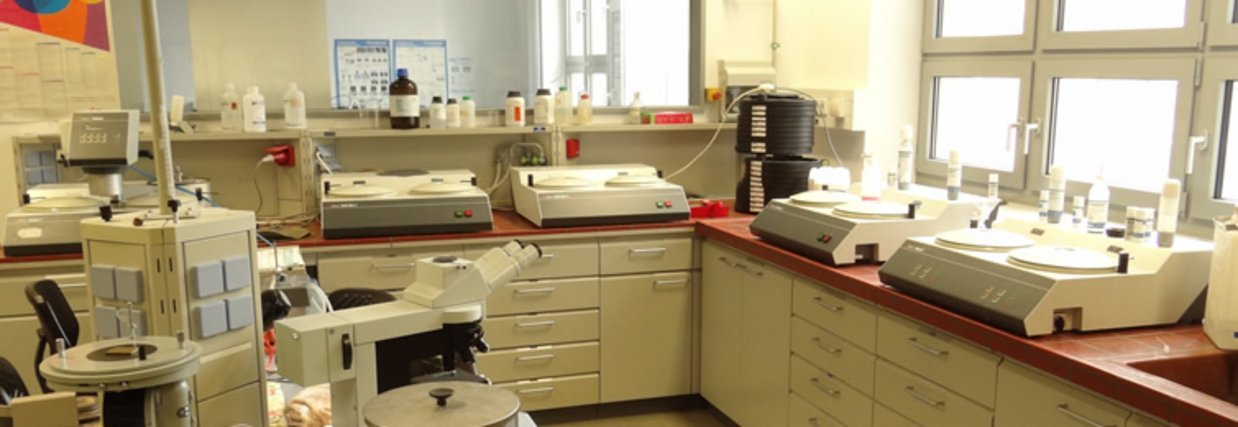
In this laboratory area, students are taught basic skills in making sections of a wide variety of materials as well as the fundamentals of conducting tensile tests.
Contact
- Head: Prof. Dr. Jürgen Merker
- Staff: Olaf Hesse